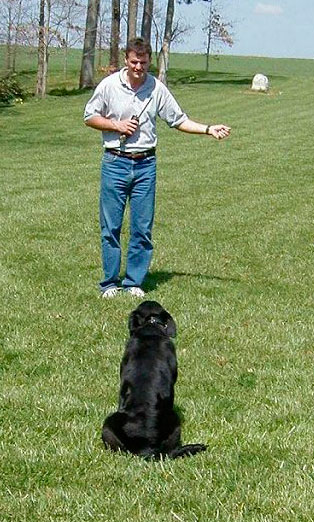
Get your retriever some real-world training before the season
Waterfowl hunters live year-round for the season. If it opened tomorrow, they would be ready to go. Here’s a duck hunter’s checklist.
Shotgun: check. Shells: check. Waders: check. Decoys: check. Duck calls: check. Ready for waterfowl season? Check.
Uh, maybe. Maybe not.
What about your canine hunting partner? Is your retriever ready for waterfowl season? You should consider three things before the season begins, according to veteran trainer Mike Parker of Back Creek Kennel in Mt. Ulla, N.C.: the age of the dog, the level of training and the physical condition of the dog,
Parker has been producing well-trained hunting retrievers for almost four decades. He maintains some level of activity — both physical and mental — for his dogs throughout the year. He keeps them ready for increased activity as the season nears, even in the hot summer.
“In 90-degree weather, you have to be cognizant of the conditions. He could suffer a heat stroke if you work him too hard,” he said
Parker keeps his dogs in shape in the summer by taking them to the water for a swim when the sun is first coming up, to keep their muscles in shape and improve their cardiovascular activity, much like an athlete in training.
Stamina first
“We don’t do a tremendous amount of retrieving that time of year. But I want them to develop their stamina. Once the season starts, training time diminishes,” he said.
Many hunters use dove season to help prepare their retrievers for waterfowl season. And that works fine for older dogs, but not so much for young dogs, Parker said.
“You get them out, and it is exciting and fun for the dogs. But you don’t get the exercise for them dove hunting like you do water retrieving,” said Parker. He builds on the excitement level and works to hone his dogs’ retrieving skills using other birds and having hunting buddies help with training.
Test your retriever
“Most of my dogs are retrievers. But they are also flushing dogs. So when the preserve season opens, I will buy a few quail and let the dogs find two or three of them,” he said.

“I also save some of my ducks from the season before, and I plant them out in the field near my house. I let them sit for an hour or two so the scent is coming off them and then work my dogs into the wind. They get their tails wagging, and I shoot, and the dogs go into the brush and find the birds. It really lights a fire under them to get out and find birds.”
As the season nears, Parker steps up his training regime so it’s closer to an actual hunting situation, both to sharpen the dog’s mental capabilities and to further increase stamina.
“Sometimes, I will get with two or three of my buddies who have the same type retrievers, and we will set up simulated retrieves,” Parker said. “We will have two or three blinds and vary the distance. Then, we run the dogs on marks, further than I could throw a bumper by myself.
“A lot of people take their dogs out in the backyard and throw a bumper, but we might be throwing the bumper 40 or 50 yards,” Barker said. “I like having other people throwing the bumper for me, because the dog will be looking at the bird, not at me.”
Build them up
Once you have your dog’s retrieving skills honed and his excitement level up, you are almost ready for the season, but there is one more item to address: making sure your dog’s health is up to the rigors of winter hunting. Temperatures below freezing and harsh, frigid winds, which are ideal for waterfowl hunting, can drain a dog’s stamina quickly if he is not prepared for it, and retrieving in icy waters can increase the possibility of health issues.
“It is not good for dogs to expect them to perform well if they are not getting good quality food,” said Parker, who said that the protein and fat content of their food should be increased so they can survive in dramatic temperatures. He recommends a 30-to-20 protein-to-fat level in the dog’s daily food intake.
Now, complete your checklist for the waterfowl season. Add Dog’s physical condition: Check; Dog’s mental sharpness: Check.
Now you AND your hunting partner are ready to go hunting.
For more information about Mike Parker’s Back Creek Kennels, call 704-278-1699 or visit www.backcreekkennel.com.



Be the first to comment